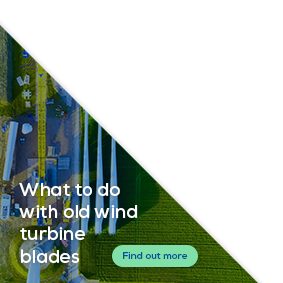News
No energy transition without expanded electricity grid

5 September 2023
Europe needs to invest more in its electricity grids. It needs to accelerate the build-out of transmission and distribution networks, reinforce existing grids and increase their flexibility. “No transition without more transmission” – without these critical investments Europe cannot deliver its energy security and climate targets. In a new one-pager WindEurope lays out its recommendations on grids.
On 7 September ENTSO-E host the EU High-Level Electricity Grid Forum “under the patronage of” Energy Commissioner Kadri Simson. The event will bring together transmission and distribution system operators (TSOs and DSOs) and stakeholders to discuss how Europe’s electricity grids can support the huge expansion of renewables.
Ahead of the event WindEurope CEO Giles Dickson said: “Europe is not investing enough in its electricity grids. Renewables are expanding rapidly, EVs are growing and heat pump sales are taking off. But the grid is not expanding at the same pace. Europe needs to ramp up grid investments from €40bn to up to €80bn a year. Much of it will go into new lines and infrastructure. But Europe must also optimise its existing grids. The technology – and finance – is readily available. The EU should make electricity grids one of its key energy priorities.”
Delayed grid connections hold back the expansion of wind energy
The EU wants to install around 30 GW of new wind energy every year between now and 2030. Last year it only installed half of that.
Delayed grid reinforcement and connections are among the main bottlenecks to the timely installation of new wind energy projects. More than 100 GW of renewables projects are waiting for grid connection in Spain, more than 50 GW in Romania. Governments must simplify the grid connection process and ensure applications are approved as fast as possible. They should also clarify the rules on grid connection and publish regular data on congestion, curtailment and available grid capacity.
Supply chain bottlenecks
Europe also needs to expand its manufacturing capacities for grid equipment. Europe’s grid equipment supply chain – substations, transformers, cables, transformers, switchgear – is not big enough today. It can produce up to 1,900 km of offshore cables a year today – Europe needs up to 3,200 km by 2030. Europe also needs to expand its transformer and substation manufacturing.
Governments should support this with dedicated funding and financing – and expedite the permitting of new factories. The EU has proposed the Net-Zero Industry Act to strengthen and expand its clean tech manufacturing capacities. This explicitly includes grid technologies. But as it stands, the Net-Zero Industry Act falls short – the EU must put money on the table to help make investments happen.
Visibility is essential for investments in new factories. Long-term framework agreements between grid operators and suppliers will be key. There should also be incentives to standardise equipment design and reduce its environmental and material footprint. National variations in the application of network codes should be avoided and cybersecurity and physical security must be a key considerations for grid infrastructure.
The governance of the grid needs to be adjusted
It is good the EU is enabling anticipatory investments by TSOs and DSOs under their proposed market design reform. These investments should be fully aligned with national energy and climate targets for 2030 and 2050.
The existing TEN-E and the Ten-Year Network Development Plan processes are inadequate for the planning of the grids – and the relevant supply chains – needed to deliver climate neutrality by 2050. Long-term grid planning needs joined-up thinking and political leadership, including to ensure accelerated permitting, the necessary focus on sustainability and biodiversity and the right cost-effective mix of direct electrification with hydrogen and gas grid investments.

